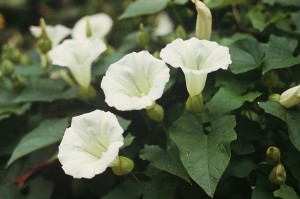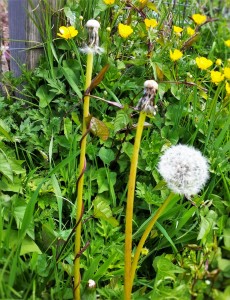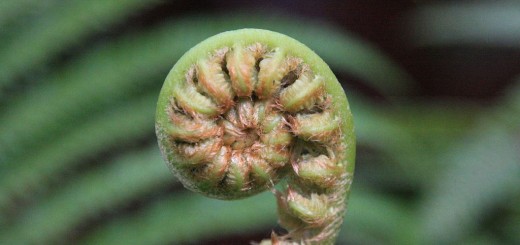Bindweed: Friend or Foe

Taken by: Lazaregagnidze in Shkmeri
My loving and wonderful Grandma, bless her heart, has both taught me and learned a lesson herself about the infamous Bindweed. Mesmerized by the white flowers, she takes a snippet home with her to add to her garden. In little time, that snippet soon turned into a roaring ocean of white flowers and curling vines taking over her garden. That experience led her to find out what she had planted was in fact Bindweed which a perennial weed despite being told that it was Morning Glory.
What is a weed? One definition states that it is a wild plant growing in unwanted areas competing with the other plants in that same area. “A pernicious pest is usually characterized by the ability to reproduce abundantly”[1]. In this case, a Bindweed does, but at a fast rate and with the help of thigmotropic movement. Thigmotropic movement is the stimulation of touch sensory of tendrils to move around objects and grow along objects [6]. This growth as explained in the an article, says that plants with this movement have “negative thigmotropic” [7]. Meaning that the “…non-contact side begins to elongate faster than the rest of the tendril, while the contact side actually compresses. This causes the tendril to curve toward the site of contact…” [7].
This rate of growth also goes along with California’s Bindweed which is said to grow up to 14 feet in

Photo taken by Micaiah Doughty
depth and the rhizome and root can grow 2 1/2 to 5 tons an acre based off an experiment [5]. This doesn’t even include the vines growing on their own between 15 to 30 feet away from the parent plant, rounding up to a whopping 10 feet in Bindweed growth taking over plants in one season [5]. It doesn’t help either when the Bindweed can continue the invasive growth by spreading up to 550 seeds a season [5].
Since the Bindweed is invasive, projects to help eliminate the infestation of the plants have been set in Washington. In a status report, they say that in order to fight the weeds, they use native plants to naturally get rid of the non-native species[2]. Bindweed is originally from Europe, North Africa, and temperate parts of Asia [8]. Non-native Bindweed in another place is not good because “It competes with other species for sunlight, moisture and nutrients. It poses threats to restoration efforts and riparian corridors by choking out grasses and forbs. It can decrease habitat biodiversity. It is one of the most serious weeds of agricultural fields in temperate regions of the world” [8]. Bindweed is a serious problem. Efforts to remove the plant are started by using herbicides on the roots and removing the vines annually.
Confusing Bindweed and Morning Glory who are both in the Convolvulaceae family, is not hard since I have done it myself when my group went to document plants for our thigmotropic movement project. Originally we were supposed to have Bindweed in our project, but because it is a non-native and invasive, our plant was removed from site.
Knowing beforehand the difference between the two vines would have been helpful. For example, Bindweed’s have arrowhead shaped leaves that vary in size, bigger towards the base of the stem and smaller towards the top of the vine [4]. The flowers vary in color from white to pink and look like trumpets. These characteristics are similar to the Morning Glory, but Morning Glory has more than white or pink colors for flowers and their leaves are heart-shaped [5]. Even though knowing now how to differentiate them still doesn’t change the fact that the thigmotropic movement of the Bindweed helps it’s invasive ways take over native areas of places around the world like the garden in your own very backyard.

Taken by: Hida Takayama in Japan
My Grandma had meant well when she spied the white flowered vine. It’s easy to see why Bindweed’s characteristics have them confused with the non-weed Morning Glory. Thigmotropic plants like the Bindweed are their chosen pattern of growth that sets them apart from other types of plants. Bindweeds, if like my Grandma who seems to forgive and love any and every little thing, you find yourself befriending the plant, you might find yourself in a position where it will become your greatest foe in the future.
Sources (Scientific Citation):
1. R. Hugh Crowley and Gale A. Buchanan, “Variations in Seed Production and the Response to Pests of Morningglory (Ipomoea) Species and Smallflower Morningglory (Jacquemontia tamnifolia)” in Weed Science (1982), p.p. 187-190.
2. Gary L. Piper, Biological Control of Weeds in Washington: Status Report. Proc. VI Int. Symp. Biol. Contr. Weeds. 817-826 (1985).
3. the flower expert “Morning Glory,” (Publication 2005-2011; http://www.theflowerexpert.com/content/aboutflowers/tropicalflowers/morning-glory ).
4. Mike, “Morning Glories are Fine; Bindweed is Not!” (gardens alive, 2016).
5. S. D. Wright, C. L. Elmore, and D. W. Cudney, “How to Manage Pests” (Field Bindweed Management Guidelines–UC IPM, 2014).
6. John Williams. High School Biology: Tutoring Solution. Thigmotropism in Plants: Definition & Overview. Chapter 23/Lesson 13. http://study.com/academy/lesson/thigmotropism-in-plants-definition-lesson-quiz.html
7. Steffan “Plant Wizard” Vartanian. 1997. Thigmotropism in Tendrils. Kenyon College. [5/20/16]. http://biology.kenyon.edu/edwards/project/steffan/b45sv.htm
8. The USDA Forest Service, Forest Health Staff. 02/08/06. Field Bindweed Convolvulus arvensis L. Weed of the Week. [5/20/16]. http://www.na.fs.fed.us/fhp/invasive_plants/weeds/field_bindweed.pdf


